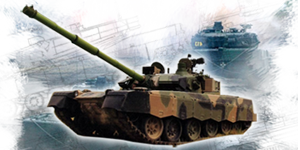The BvS10 (Bandvagn Skyddad 10, also known as Bandvagn 410 or BV410) is a tracked articulated amphibious all-terrain armoured vehicle designed and produced by BAE Systems Land Systems Hägglunds of Sweden and by FNSS of Turkey (under license). The "All Terrain Vehicle (protected)" or ATV(P) or "Viking" was tailored for UK forces, but originally developed as a collaboration between Hägglunds Vehicle AB and the British MoD on behalf of the Royal Marines as it is fully amphibious. It wa soperational from 2005 and use din Afghanistan. Sweden adopted it onky from 2012 to replace its ageing own park of BV 206S.
The BvS10 is similar to, but distinct from, Hägglunds earlier Bandvagn 206 or Bv 206S. It is a much larger vehicle based upon the characteristic twin-cab, articulated frame-steering system typical of Hägglunds all-terrain vehicles. The main differences from the older Bv206s are a more powerful Cummins 5.9 litre diesel engine, improved ground clearance, and newly developed chassis, power train and steering units that give the vehicle considerably enhanced speed (up to 65 km/h from the previous 51.5 km/h on road) and comfort on road and in terrain, as well as greater load-carrying capability (up to 5 tons), and the ability to add various modular sub-systems such as add-on armour, weapon mounts, a load-changer and cargo platforms.
The receipe had been constantly improved but never surpassed. The 1970 incentive in case of a war with USSR, was to crteat a vehicle capable moving in densely forested areas, on unevent and marshy terrain and deep snow. The limited weight, compacity, wide tracks, and articulation, worked well for this. The powerplant and most parts used comercial "off the shelf" components, making both the overall vehicle and its maintenance inexpensive.
The vehicle's simple handling qualities will effectively minimize driver training. The vehicle can be air dropped and transported by a variety of aircraft and helicopters. The Bv206 family of all-terrain vehicles is suitable for rapid reaction forces. To date, Bv206S vehicles have been sold to France, Germany, Italy, Spain and Sweden.
On December 21, 2004, The German Defense Procurement Agency (BWB) and BAE Systems' Land Systems Hagglunds signed a contract for 75 Bv206S vehicles valued at approximately MSEK 300 ($42 million). This order is the second batch for the German Army's Mountain Brigade, which intends to purchase up to 200 vehicles. The first order was awarded in 2002 for 31 vehicles. In September 2005, the German Army - Bundeswehr - placed an order to Rheinmetall Landsysteme GmbH valued at 151 million Euro for 81 BV206S command and transport vehicles and 100 DURO armored personnel carriers. The vehicles were slated for delivery between 2006 through 2009. On 21 June 2006, the Swedish Defense Materiel Administration (FMV) placed an order with BAE Systems Hagglunds for 52 Bv206S armored vehicles valued at MSEK 250 ($32 million). Including this order, 479 Bv206S vehicles have been sold to Sweden, Germany, Italy, France and Spain.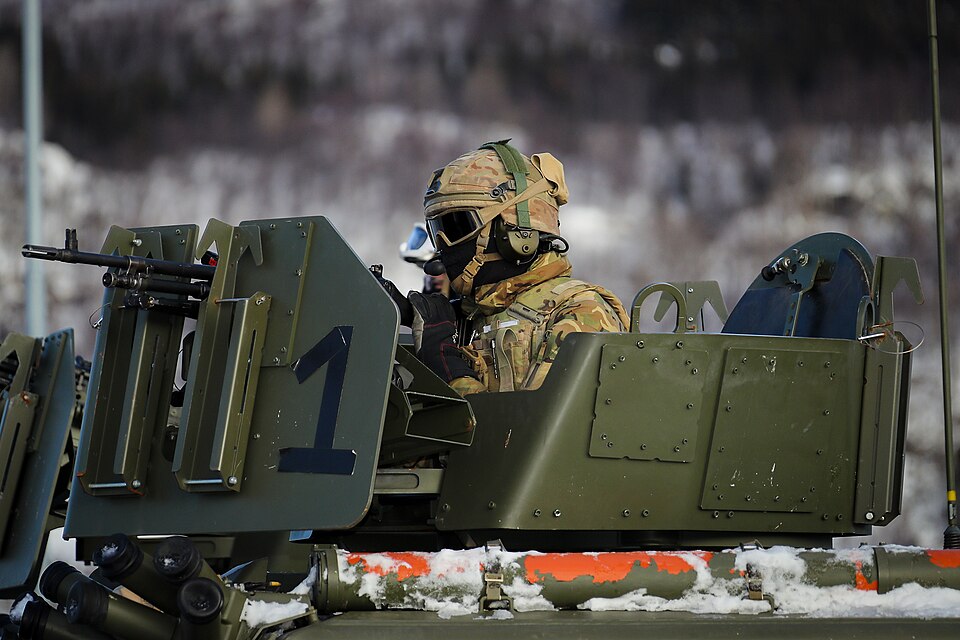
Manned station with GMPG, 47 COMMANDO-EXCERCISE CETUS 20 MOD
The armament is almost an afterthought as the vehicle is a battle taxi in lower intensity, on an heavily forested environment. Its depends o, the customers but as standard there is a gun position on front of the forward left side of the forward cab, containing a machine gun position, either 7.62mm standard NATO GMPG or 0.5 inches M2 Heavy Machine Gun in other cases. This is without the troops platoon's own arsenal of small arms, mortars, MANPADS and portable ATGMS that can demultiply the firepower against all threats at various ranges. Now, there are specific variants using the rear module or trailer for dedicated military uses. For exampkle a vehicle was developed as an IRIS-T SAM carrier. Another was declined as heavy mortar vehicle. However these are clear exceptions. The bulk are used as transports, with a few used as ambulances.
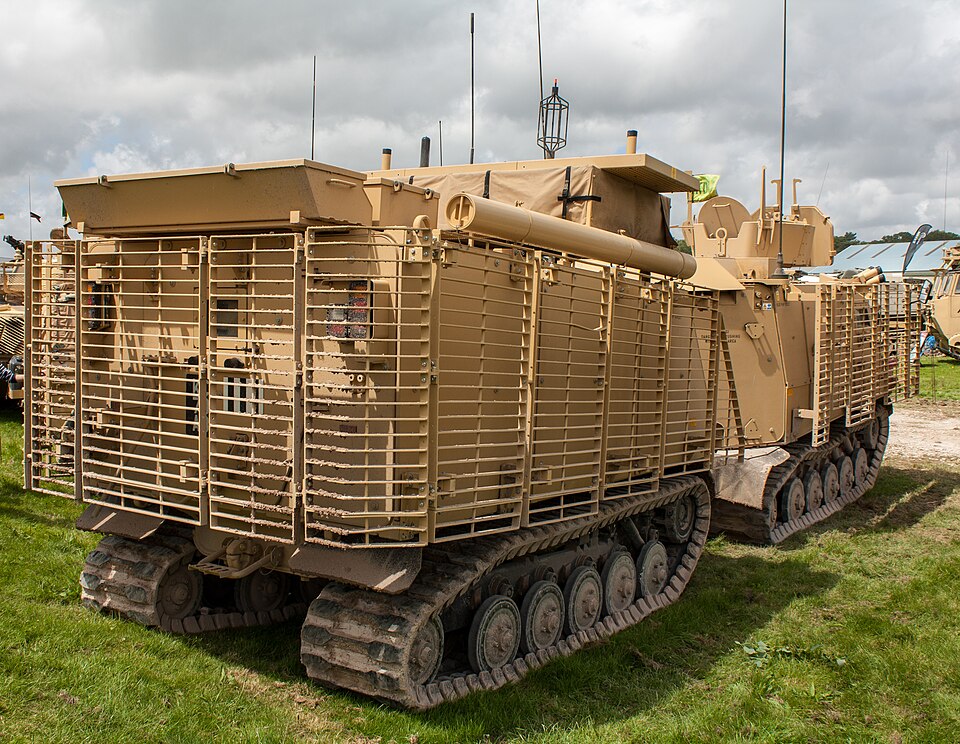
Viking BVS10 ATV Warthog, rear
Originally designed for the British Royal Marines, the "Viking" is the British variant of the BVS-10 as trialled and developmed as part of the 2001-2004 programme led by Major Jez Hermer. When accepted in 2004, 108 vehicles were delivered and accepted into service, deliveries starting by 2005. The Viking is used by the Royal Marines Armoured Support Company. By October 2012, the Royal Marines ordered an additional 99 BvS10 MkII for £38 million and by December 2023, 20 Mark I were donated to Ukraine.
Royal Marines roll-out new vehicles on mortar trials
There are Four British variants:
The Troop Variant (TCV): 2 crew +10 passengers
Command Variant (CV): 2 crew+ 8 operators with a new rear cab with enhanced digital communications platform
Repair and Recovery Variant (RRV): 4 specialist maintenance vehicle mechanic crewmen and modified rear cab*
Ambulance Variant (AV).
*HIAB crane, fully mobile workshop, air compressor, 9 tonne cap. capstan winch, hydraulic anchors.
All four are air-portable, slinged under a Boeing CH-47 Chinook, complete or in separate front-rear components.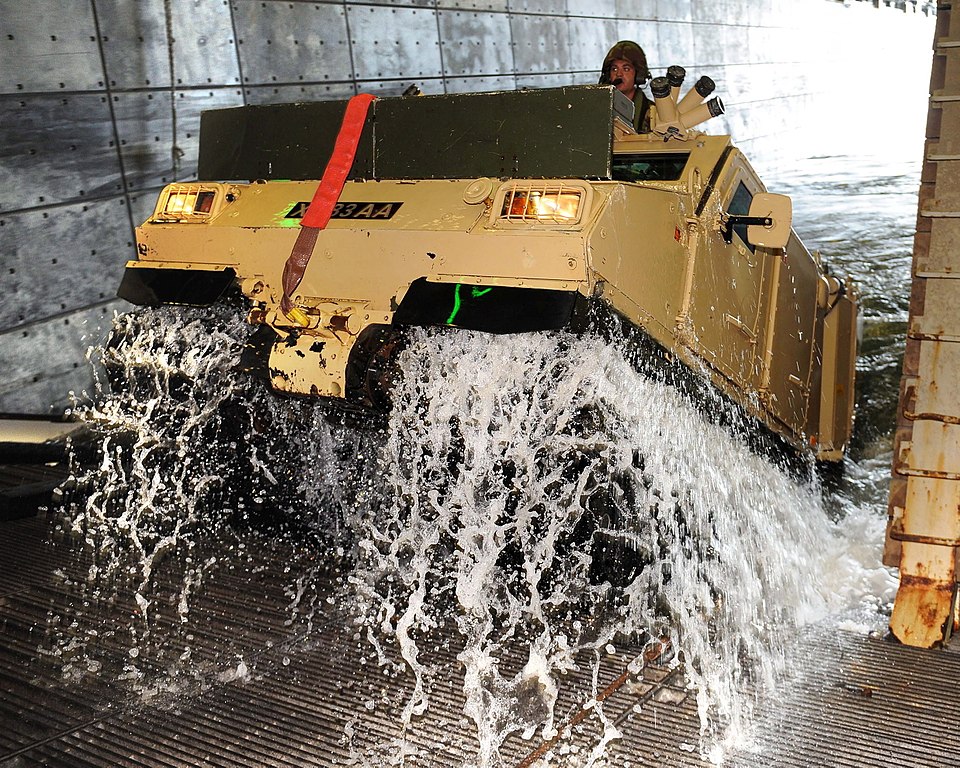
UK Viking entering HMS Bulwark
It first saw operations in Afghanistan from September 2006, and the Royal Marines Armoured Support Group was formed in December 2007. 33 Vikings received slat armour in Afghanistan by the summer 2006 when relieving the Parachute Regiment in Helmand province. Mines doesn't work due to their low ground pressure bu they are vulnerable to IEDs. They were upgraded with extra Armour packages, but were replaced by ST Engineering Land Systems (STK) BRONCO or "Warthog" as an ultimate high survival variant.
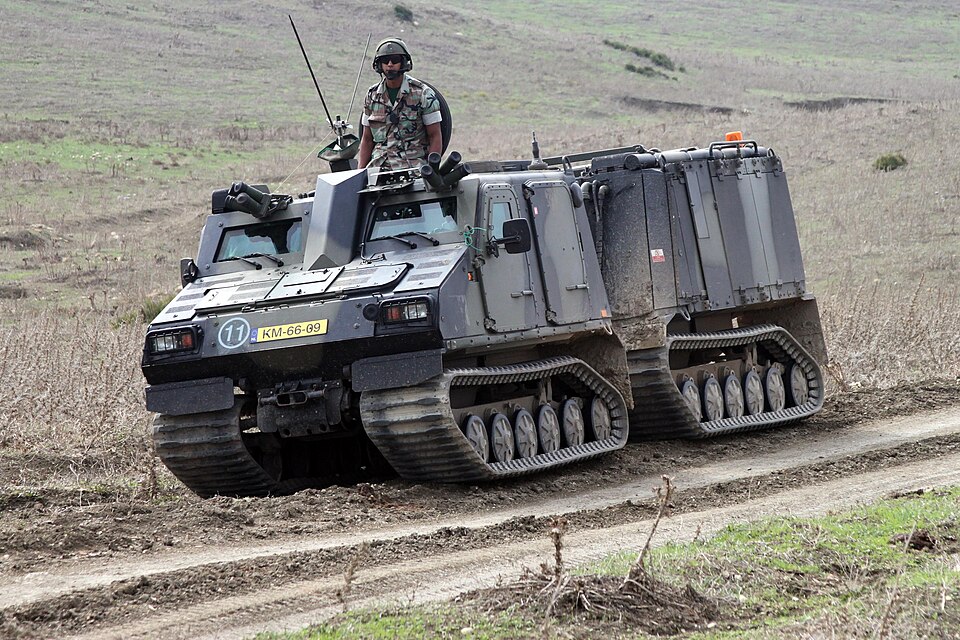
BvS 10, Netherlands Marine Corps, 2015
The Netherlands Marine Corps also uses the BvS10, also due to its amphibious capabilities. 74 were delivered (46 APC, 20 command, 4 repair and recovery, 4 ambulance). Of these 28 were donated to Ukraine from 2022 and prior to March 2023. The vehicle succeeded the Bv206 D6. The "Viking Bandvagn S10".
On 27 March 2008 the Dutch Parliament agreed to send a 60-men strong Marine reconnaissance unit to Chad as part of the EUFOR peacekeeping mission, for an Irish battalion. First operational deployment after exercises in Norway and the UK. As part of the Dutch ISAF, a company was deployed to Uruzgan, Afghanistan from July 2009. Several BvS10s received slat armour. Today they are scheduled to enter the FLATM BV (Future Littoral All Terrain Mobility Band Vagn) program, with an expected purchase of 179 more BvS10 to replace the ageing BvS206D.
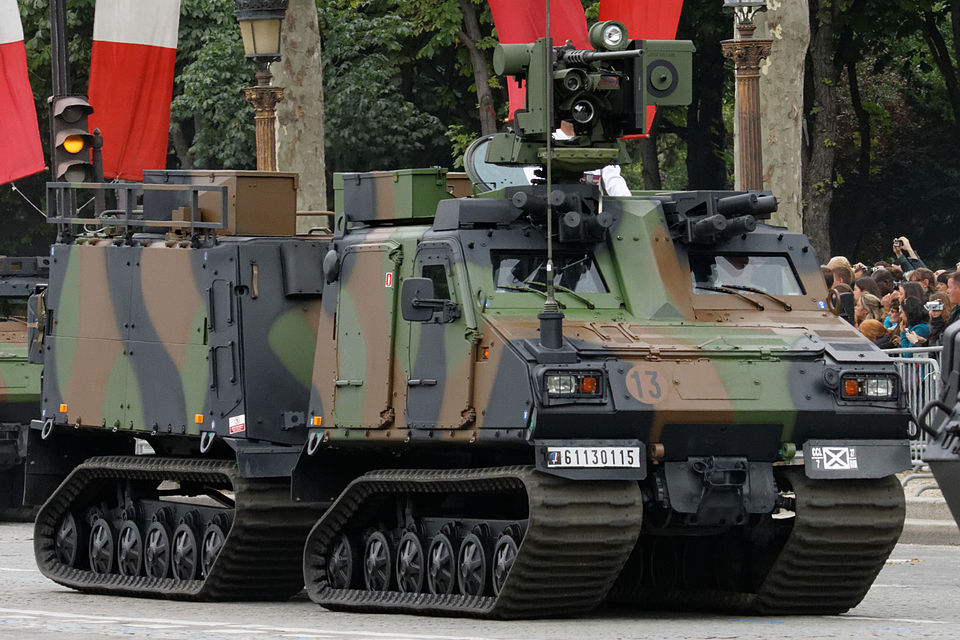
BvS 10 Bastille Day 2014
On 18 December 2009, the French MoD announced an order for 53 BvS10 Vikings, first batch of a total of 129 including servicing for £220 million. These comes from the BAE factory in Sweden. This was break from the locally produced Bronco All Terrain Tracked Carrier from ST Kinetics and Thales. The first 53 BvS10 MkII are called VHM for "véhicle à haute mobilité" by December 2009, 77 more in option, which was never exercised. Trials lasted 8 months in 2011, until accepted by the DGA in September 2011 and first deliveries from November 2011. Initially it was equipped by the PL80 manned weapon station shared by the VBL, gradually replaced by the Protector M151 RCWS from 2018 onwards. The vehicle is used by the Chasseurs Alpins in Mountainous regions.
On 5 January 2012, well after UK (starting in 2000) the Swedish Armed Forces ordered 48 BvS10 MkIIB (19 APC, 2 Command and Control vehicles, 17 logistics vehicles, 10 ambulances) designagned Bv410, to be delivered from late 2012, deployed to the Swedish contingent in Afghanistan by the spring of 2013. The contract of 700 million SEK included support and training, with options for 127 more vehicles in three batches. By 25 September 2013, 105 were confirmed for $160 million, and on 19 December 2013, Sweden officialized the order for a revised $120 million. Like for the Netherlans an d Britain, thy are coming into the troop carrier, command, ambulance, and logistic variants with deliveries scheduled for 2014-2015. In 2019, Sweden started fielding the Eldenhet 98 SAM, mounted on the Bv410 platform, replacing the RBS 70.
On 3 May 2021, BAE Systems signed a contract for $200 million to deliver an extra 127 BvS10s, signed with the Swedish military procurement agency, for command and control, and logistics vehicles, scheduled for 2022-2024, and a 2022 $50m follow-on order for 40 was placed as well as 236 under the CATV program to fully relace the BV206S. The vehicle is locally known as the Bandvagn 410.
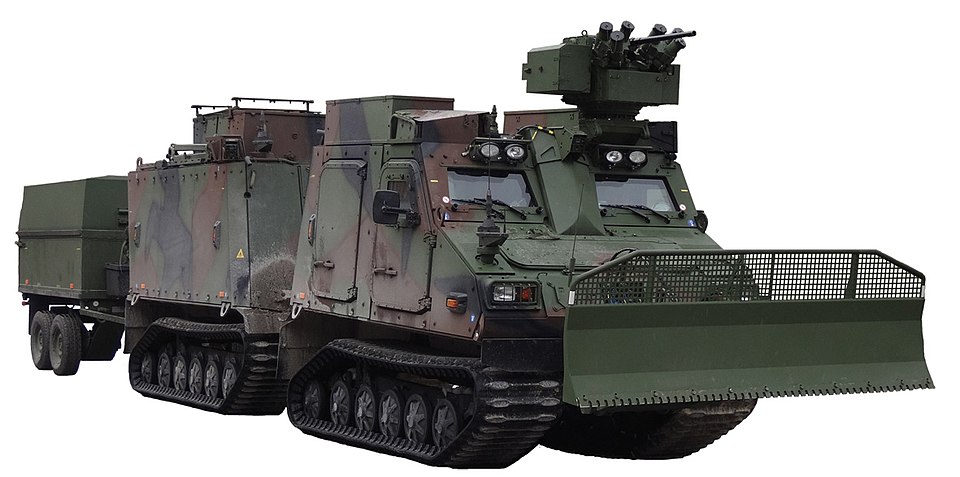
BvS-10 AUT
On 30 June 2016, BAE Systems announced a procurement by the Austrian Army, 32 BvS10s to be delivered 2017-2018 for €85 million. They are part of the European Union Mountain Training Warfare Initiative (EU MTI) and similar to the French vehicles, since they are used for the same missions. These MkIIB somes with a CBRN protection and ESLAIT EFWS WS4 PANTHER remote controlled weapon station, "Combat NG" battlefield management system, Improved mine protection an new camera based 360° observation system. The first arrived by February 2019. Later in "Aufbauplan 2032" 100 more Bvs10 were announced.
Though the CATV acquisition programme (see above) Germany, as Sweden and the UK purchased in common 436 BvS10s by December 2022 ($760 million) and the first are awaited for 2025 onwards. By June 2024, BAE Systems signed a €42 million contract with Tatra Defense Vehicle for the welding, painting and cab insulation of 250 vehicles, with an option for 274 more and Germany, in addition to the 140 BvS10 ordered by December 2022, confiormed the purchased of 227 BvS10 by March 2023. The final requirement was for 640 vehicles up to 2031, so 273 in a third batch for the Bundeswehr, UK and Sweden.
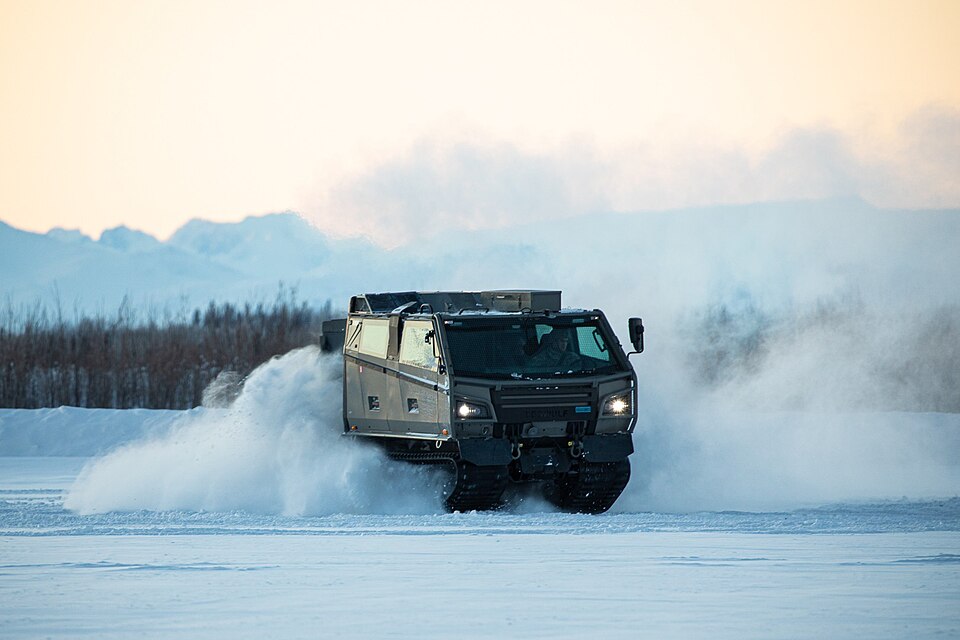
US Army testing the unprotected BVS-10 Beowulf in Cold Weather All-Terrain Vehicles
On 22 August 2022, BAE Systems and the MoD announced a $278 Million contract with spare parts and logistics support for 163 BVS-10 to be delivered by 2029 for the US Army as part of the Cold Weather All-Terrain Vehicle (CATV) program. Components are supposed to come from US suppliers (engines, transmission, hydraulics). The Beowulf is sechedule to replace the current US Army BV206 based Small Unit Support Vehicles (SUSV) purchased in the the 1980s. The US Army and the National Guard selected the BvS10 Beowulf (unarmoured) by August 2022, and 110 vehicles ordered, before it became the CATV programme in 2020. 2 prototypes were ordered in April 2021 for the selection, 5 received in 2023, 44 ordered in December 2024. Deliveries are ongoing.
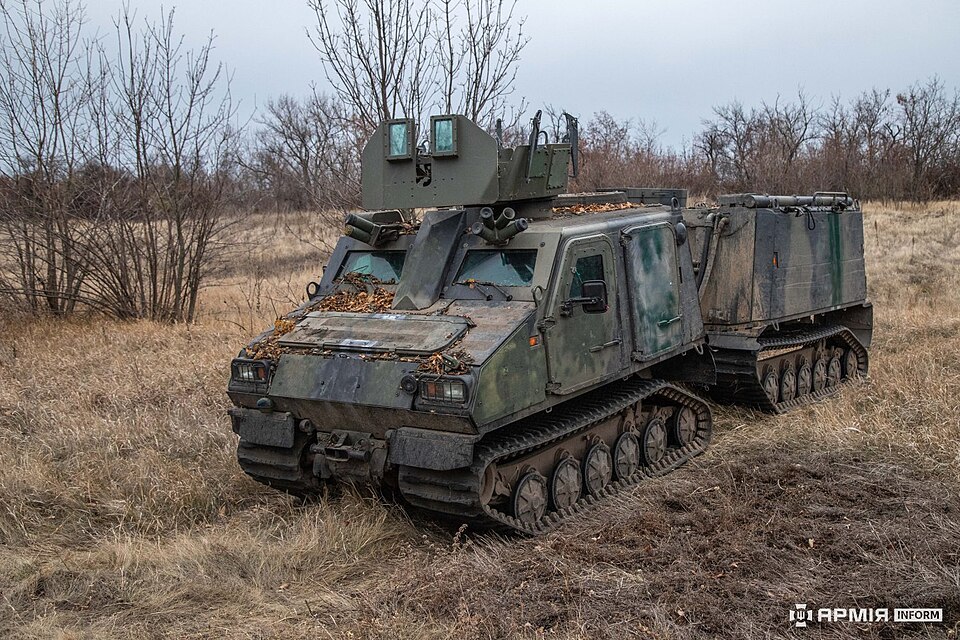
Ukrainian 38th Marine Brigade's BvS 10
Prior to March 2023, the Netherlands donated 28 BvS10 and by December 2023, the UK announced it was donating an additional 20 BvS10 to Ukraine. So far, 15 had been lost in combat. They also lost a BV 206.
As part of the DAME programme (Domestic Arctic Mobility Enhancement), the Canadian Army also wants to replaced its 40 years old Bv206 and desired four variants, troop transport, command post, cargo, and ambulance by June 2023, when an RFI was submitted, RFP planned for 2026, contract to be awarded in 2027 and full replaceement and operational capability by 2030.
The BvS10 is similar to, but distinct from, Hägglunds earlier Bandvagn 206 or Bv 206S. It is a much larger vehicle based upon the characteristic twin-cab, articulated frame-steering system typical of Hägglunds all-terrain vehicles. The main differences from the older Bv206s are a more powerful Cummins 5.9 litre diesel engine, improved ground clearance, and newly developed chassis, power train and steering units that give the vehicle considerably enhanced speed (up to 65 km/h from the previous 51.5 km/h on road) and comfort on road and in terrain, as well as greater load-carrying capability (up to 5 tons), and the ability to add various modular sub-systems such as add-on armour, weapon mounts, a load-changer and cargo platforms.
Development
The precedessor: Bv206/206S (1978)
The Bv206S is an all-terrain articulated armored vehicle designed meeting the toughest military requirements for extreme mobility in all climates with high reliability and low maintenance costs. The Bandvagn 206 was designed in Sweden as an all terrain carrier (unprotected at first) in the 1970s by Hägglund & Söner. It was produced by them in 1980–1997, then by Alvis plc which ecquired the rights between 1997 and 2004, and then by BAE Systems Hägglunds from 2004 with the improved Bv206S. More than 11,000 were manufactured as of 2017, sold to 40 nations worldwide.The receipe had been constantly improved but never surpassed. The 1970 incentive in case of a war with USSR, was to crteat a vehicle capable moving in densely forested areas, on unevent and marshy terrain and deep snow. The limited weight, compacity, wide tracks, and articulation, worked well for this. The powerplant and most parts used comercial "off the shelf" components, making both the overall vehicle and its maintenance inexpensive.
The vehicle's simple handling qualities will effectively minimize driver training. The vehicle can be air dropped and transported by a variety of aircraft and helicopters. The Bv206 family of all-terrain vehicles is suitable for rapid reaction forces. To date, Bv206S vehicles have been sold to France, Germany, Italy, Spain and Sweden.
On December 21, 2004, The German Defense Procurement Agency (BWB) and BAE Systems' Land Systems Hagglunds signed a contract for 75 Bv206S vehicles valued at approximately MSEK 300 ($42 million). This order is the second batch for the German Army's Mountain Brigade, which intends to purchase up to 200 vehicles. The first order was awarded in 2002 for 31 vehicles. In September 2005, the German Army - Bundeswehr - placed an order to Rheinmetall Landsysteme GmbH valued at 151 million Euro for 81 BV206S command and transport vehicles and 100 DURO armored personnel carriers. The vehicles were slated for delivery between 2006 through 2009. On 21 June 2006, the Swedish Defense Materiel Administration (FMV) placed an order with BAE Systems Hagglunds for 52 Bv206S armored vehicles valued at MSEK 250 ($32 million). Including this order, 479 Bv206S vehicles have been sold to Sweden, Germany, Italy, France and Spain.
Design
The Bv206, 206S and 210 all consists of the same arrangement, two tracked cars articulated in relation to each other, powered by a single diesel forward. The front and rear are linked by a single hydraulic steering linkage, giving them great flexibility and maneuverability. The forward compartment comprises the engine, driver cab, and two more seats, aznd the rear compartment acts like a "trailer", utilitarian and modular. The BVS-10 is essentially a modernized 206S, a bit larger. There are the same chassis, for an armoured personnel carrier designed originally by Alvis Hägglunds AB at Örnsköldsvik and produced from 2001, 240 vehicles up to 2005 but more more afterwards (see later). The initial prototype was built in 1998.General Layout
The vehicle is composed of the same articulated chassis than the 206S, with a first forward module containing the engine, a 2-man crew driver and co-driver behind armoured glass, with two side doors, and ten troops between the rear part of the forward module and the rear trailer module in troop configuration. The sensmble has a combat weight of 25,353 lb or 11,5 tons, well spread over thankls to large width tracks. The overall Length is 24 ft 9 ¼ in or 8.5 meters overall for an overall width of 7 ft 2 ⅝ in or 2.21 meters, overall Height of 7 ft 2 ⅝ in 2.21 meters as well (basis with taller versions), and a ground clearance of 1 ft 1 ¾ in or 34 cm.Protection
The basic hull is protected only by 6 mm on all sides, with bullet proof glass windows. However the base hull had attachement points to receoved addèon armour panels, bolted on, for an extra 10 mm RHA (Rolled Homonegeous Armour). The combination of both protects the crew against small arms fire, heavy machine gun fire at the front (sloped). The vehicle is fuklly sealed and could be protected NBC. For active protection it is given optionally two sets of four or five smoke projectors forward and sometimes aft. There is a fire extinguisher in the engine compartment and troop compartment aft.Powertrain and Performances
The BVS-10 like the BV 206S is not going to set a world record for speed, that's not the point. Mobility on the worst terrain is. It is powered by a more powerful and very reliable Cummins iSBe250-30 diesel rated for 275 bhp at 2500 rpm, coupled with a transmission Allison MD3560, 6 speeds forward, one reserve, albeit this is made hard by the articulated rear trailer. Top Speed on road is 40 mph, 64 km, down, cross-country Speed to an average of 3-5 mph or 8 kph. Cruising Range on Road is 186 mi or 300 km, unknown cross-country. It is capable of climbing a gradient of 70% thanks to its large tracks with excellent grip, stay stavle on a side slope of 30 %and cross a trench of 79 inches or 2 meters. These also are fully amphibious with enough buoyancy for swimming in varying sea-states with a full load.Armament

Manned station with GMPG, 47 COMMANDO-EXCERCISE CETUS 20 MOD
The armament is almost an afterthought as the vehicle is a battle taxi in lower intensity, on an heavily forested environment. Its depends o, the customers but as standard there is a gun position on front of the forward left side of the forward cab, containing a machine gun position, either 7.62mm standard NATO GMPG or 0.5 inches M2 Heavy Machine Gun in other cases. This is without the troops platoon's own arsenal of small arms, mortars, MANPADS and portable ATGMS that can demultiply the firepower against all threats at various ranges. Now, there are specific variants using the rear module or trailer for dedicated military uses. For exampkle a vehicle was developed as an IRIS-T SAM carrier. Another was declined as heavy mortar vehicle. However these are clear exceptions. The bulk are used as transports, with a few used as ambulances.
Users
 British Use
British Use
Royal Marines

Viking BVS10 ATV Warthog, rear
Originally designed for the British Royal Marines, the "Viking" is the British variant of the BVS-10 as trialled and developmed as part of the 2001-2004 programme led by Major Jez Hermer. When accepted in 2004, 108 vehicles were delivered and accepted into service, deliveries starting by 2005. The Viking is used by the Royal Marines Armoured Support Company. By October 2012, the Royal Marines ordered an additional 99 BvS10 MkII for £38 million and by December 2023, 20 Mark I were donated to Ukraine.
British variants

Royal Marines roll-out new vehicles on mortar trials
There are Four British variants:
The Troop Variant (TCV): 2 crew +10 passengers
Command Variant (CV): 2 crew+ 8 operators with a new rear cab with enhanced digital communications platform
Repair and Recovery Variant (RRV): 4 specialist maintenance vehicle mechanic crewmen and modified rear cab*
Ambulance Variant (AV).
*HIAB crane, fully mobile workshop, air compressor, 9 tonne cap. capstan winch, hydraulic anchors.
All four are air-portable, slinged under a Boeing CH-47 Chinook, complete or in separate front-rear components.
UK deployments

UK Viking entering HMS Bulwark
It first saw operations in Afghanistan from September 2006, and the Royal Marines Armoured Support Group was formed in December 2007. 33 Vikings received slat armour in Afghanistan by the summer 2006 when relieving the Parachute Regiment in Helmand province. Mines doesn't work due to their low ground pressure bu they are vulnerable to IEDs. They were upgraded with extra Armour packages, but were replaced by ST Engineering Land Systems (STK) BRONCO or "Warthog" as an ultimate high survival variant.
UK follow-on orders
By May 2007 the MoD placed an order with BAE Systems Hägglunds for 21 equipment transporter for the new Thales Watchkeeper UAV (unmanned aerial vehicle). By 26 June 2008 the MoD purchased 14 more Viking BvS10 at £14 million, comprising 9 repair variants, one command variants and the rest troop carriers for Afghanistan. By January 2009, 9 more were ordered. The existing 99 Vikings from 2010 were modernized and overhauled under a £37 million project, aiming at improving firepower, armour and protection, completed initially in 2014 but ported to April 2016. Outside the Warthog was also developed the Beowulf, an unarmoured version with a new cabin for extra speed, 14 crew or 8 tons cargo at 65 km/h in 2020. Dutch Use
Dutch Use

BvS 10, Netherlands Marine Corps, 2015
The Netherlands Marine Corps also uses the BvS10, also due to its amphibious capabilities. 74 were delivered (46 APC, 20 command, 4 repair and recovery, 4 ambulance). Of these 28 were donated to Ukraine from 2022 and prior to March 2023. The vehicle succeeded the Bv206 D6. The "Viking Bandvagn S10".
On 27 March 2008 the Dutch Parliament agreed to send a 60-men strong Marine reconnaissance unit to Chad as part of the EUFOR peacekeeping mission, for an Irish battalion. First operational deployment after exercises in Norway and the UK. As part of the Dutch ISAF, a company was deployed to Uruzgan, Afghanistan from July 2009. Several BvS10s received slat armour. Today they are scheduled to enter the FLATM BV (Future Littoral All Terrain Mobility Band Vagn) program, with an expected purchase of 179 more BvS10 to replace the ageing BvS206D.
 French Use
French Use

BvS 10 Bastille Day 2014
On 18 December 2009, the French MoD announced an order for 53 BvS10 Vikings, first batch of a total of 129 including servicing for £220 million. These comes from the BAE factory in Sweden. This was break from the locally produced Bronco All Terrain Tracked Carrier from ST Kinetics and Thales. The first 53 BvS10 MkII are called VHM for "véhicle à haute mobilité" by December 2009, 77 more in option, which was never exercised. Trials lasted 8 months in 2011, until accepted by the DGA in September 2011 and first deliveries from November 2011. Initially it was equipped by the PL80 manned weapon station shared by the VBL, gradually replaced by the Protector M151 RCWS from 2018 onwards. The vehicle is used by the Chasseurs Alpins in Mountainous regions.
 Swedish Use
Swedish Use
On 5 January 2012, well after UK (starting in 2000) the Swedish Armed Forces ordered 48 BvS10 MkIIB (19 APC, 2 Command and Control vehicles, 17 logistics vehicles, 10 ambulances) designagned Bv410, to be delivered from late 2012, deployed to the Swedish contingent in Afghanistan by the spring of 2013. The contract of 700 million SEK included support and training, with options for 127 more vehicles in three batches. By 25 September 2013, 105 were confirmed for $160 million, and on 19 December 2013, Sweden officialized the order for a revised $120 million. Like for the Netherlans an d Britain, thy are coming into the troop carrier, command, ambulance, and logistic variants with deliveries scheduled for 2014-2015. In 2019, Sweden started fielding the Eldenhet 98 SAM, mounted on the Bv410 platform, replacing the RBS 70.
On 3 May 2021, BAE Systems signed a contract for $200 million to deliver an extra 127 BvS10s, signed with the Swedish military procurement agency, for command and control, and logistics vehicles, scheduled for 2022-2024, and a 2022 $50m follow-on order for 40 was placed as well as 236 under the CATV program to fully relace the BV206S. The vehicle is locally known as the Bandvagn 410.
Collaborative All-Terrain Vehicle (CATV)
On 23 November 2022, Sweden awarded a £600 million framework order for 436 units of the improved BV410, featuring a higher mine protection, extra capacity in five national variants: 236 on behalf of Sweden, 140 for Germany and 60 for the United Kingdom with more on option. Austrian Use
Austrian Use

BvS-10 AUT
On 30 June 2016, BAE Systems announced a procurement by the Austrian Army, 32 BvS10s to be delivered 2017-2018 for €85 million. They are part of the European Union Mountain Training Warfare Initiative (EU MTI) and similar to the French vehicles, since they are used for the same missions. These MkIIB somes with a CBRN protection and ESLAIT EFWS WS4 PANTHER remote controlled weapon station, "Combat NG" battlefield management system, Improved mine protection an new camera based 360° observation system. The first arrived by February 2019. Later in "Aufbauplan 2032" 100 more Bvs10 were announced.
 German Use
German Use
Though the CATV acquisition programme (see above) Germany, as Sweden and the UK purchased in common 436 BvS10s by December 2022 ($760 million) and the first are awaited for 2025 onwards. By June 2024, BAE Systems signed a €42 million contract with Tatra Defense Vehicle for the welding, painting and cab insulation of 250 vehicles, with an option for 274 more and Germany, in addition to the 140 BvS10 ordered by December 2022, confiormed the purchased of 227 BvS10 by March 2023. The final requirement was for 640 vehicles up to 2031, so 273 in a third batch for the Bundeswehr, UK and Sweden.
 US Use
US Use

US Army testing the unprotected BVS-10 Beowulf in Cold Weather All-Terrain Vehicles
On 22 August 2022, BAE Systems and the MoD announced a $278 Million contract with spare parts and logistics support for 163 BVS-10 to be delivered by 2029 for the US Army as part of the Cold Weather All-Terrain Vehicle (CATV) program. Components are supposed to come from US suppliers (engines, transmission, hydraulics). The Beowulf is sechedule to replace the current US Army BV206 based Small Unit Support Vehicles (SUSV) purchased in the the 1980s. The US Army and the National Guard selected the BvS10 Beowulf (unarmoured) by August 2022, and 110 vehicles ordered, before it became the CATV programme in 2020. 2 prototypes were ordered in April 2021 for the selection, 5 received in 2023, 44 ordered in December 2024. Deliveries are ongoing.
 Ukraine
Ukraine

Ukrainian 38th Marine Brigade's BvS 10
Prior to March 2023, the Netherlands donated 28 BvS10 and by December 2023, the UK announced it was donating an additional 20 BvS10 to Ukraine. So far, 15 had been lost in combat. They also lost a BV 206.
 Canada
Canada
As part of the DAME programme (Domestic Arctic Mobility Enhancement), the Canadian Army also wants to replaced its 40 years old Bv206 and desired four variants, troop transport, command post, cargo, and ambulance by June 2023, when an RFI was submitted, RFP planned for 2026, contract to be awarded in 2027 and full replaceement and operational capability by 2030.
Gallery

BVs-10, basic hull
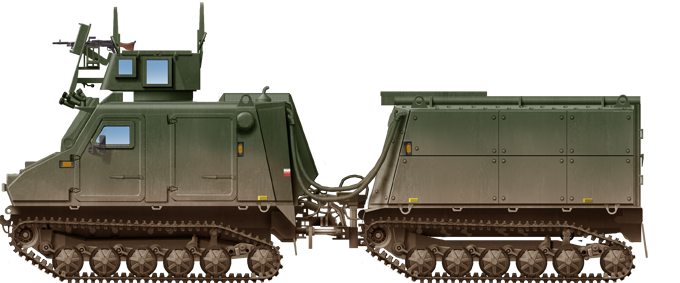
British BVs-10.

Swedish Ambutank

Swedish BVs-10 in winter camo
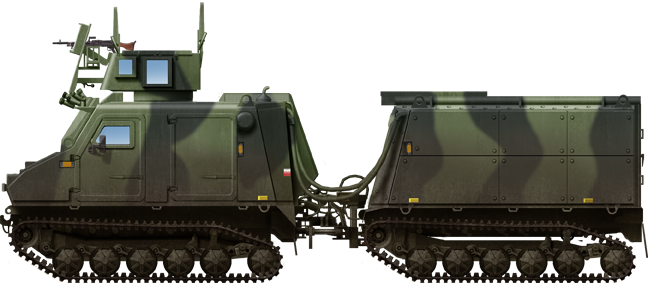
Dutch BvS-10

French Chasseur Alpins Vehicle with the initial PL80 manned weapon station
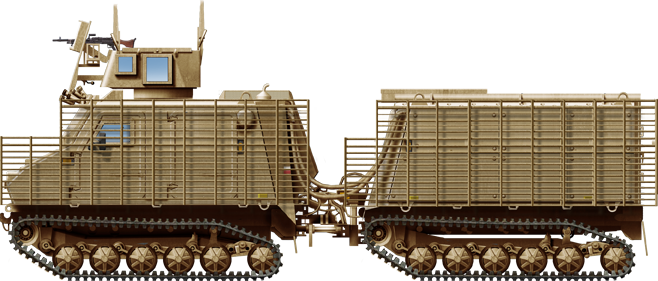
British Viking in Afghanistan
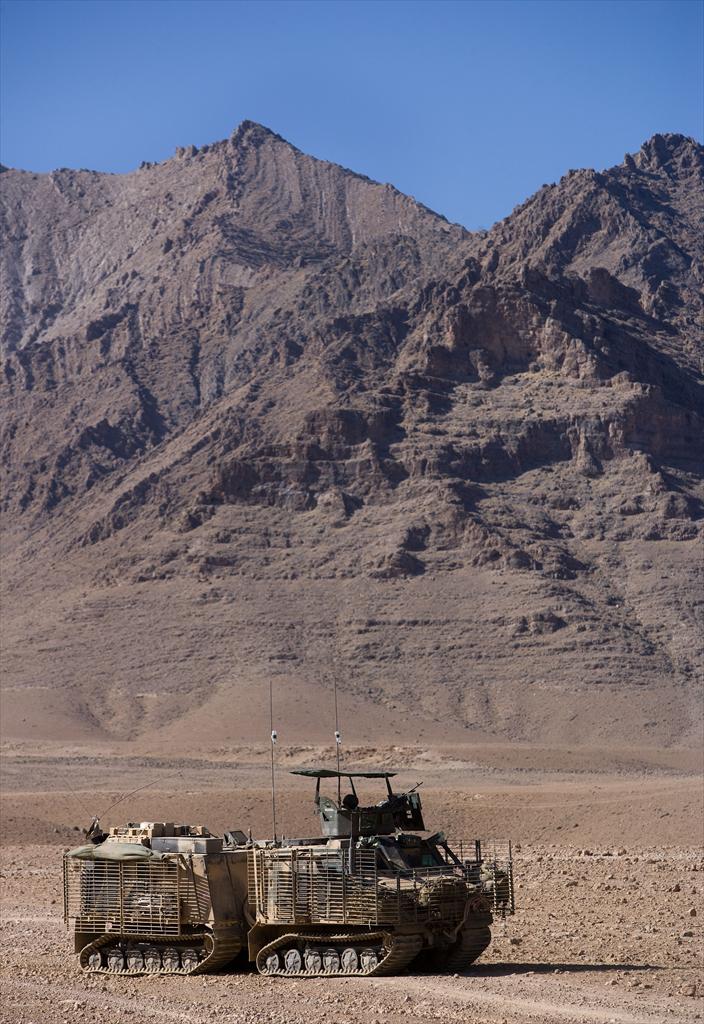
Dutch BVs10 Afghanistan
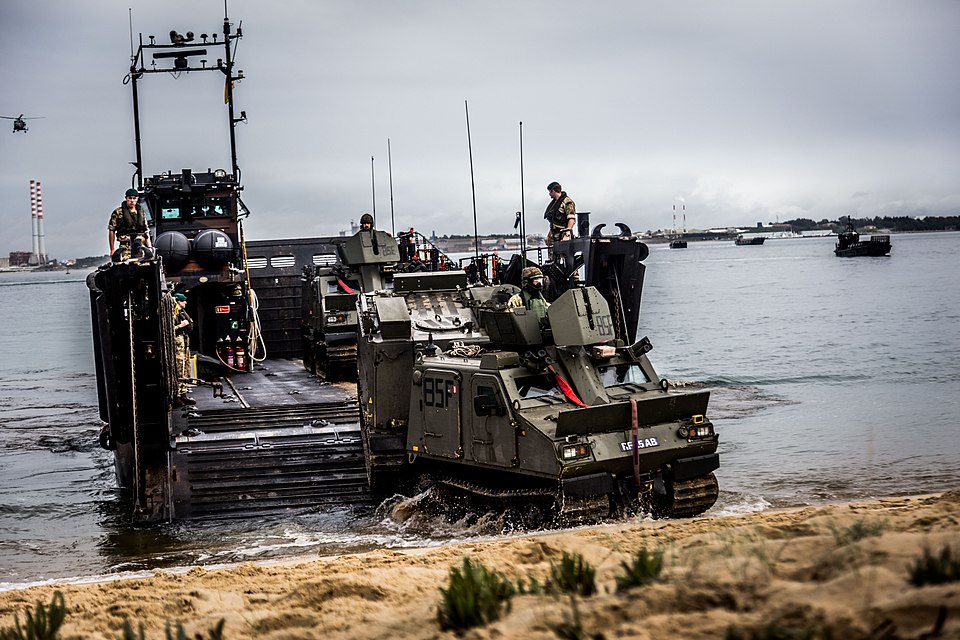
Vehicle deployed in Portugal, Miks Uzans DV Rehearsal
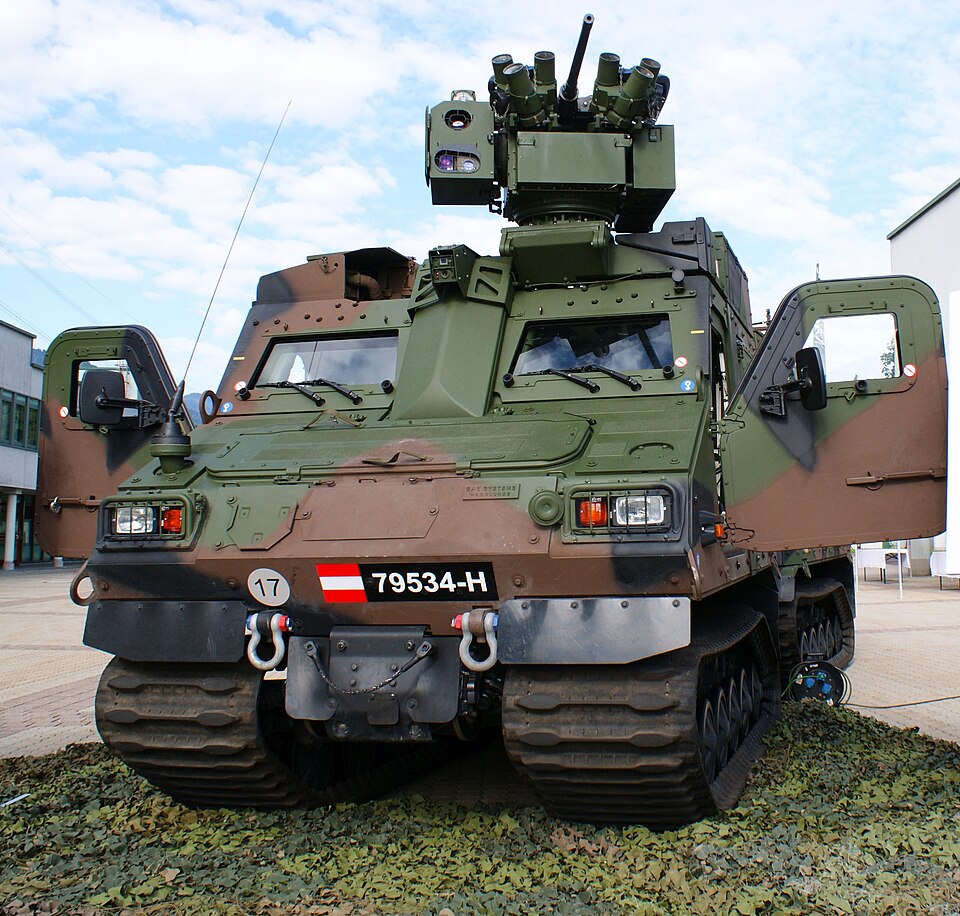
Austrian BvS10, 15ASD
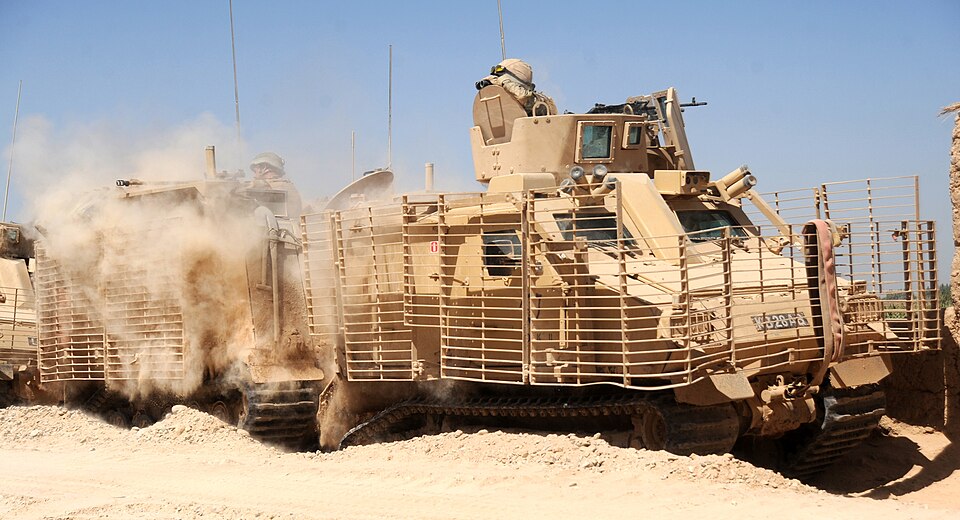
Sniper Takes on the Enemy from Back of Viking Vehicle in Afghanistan
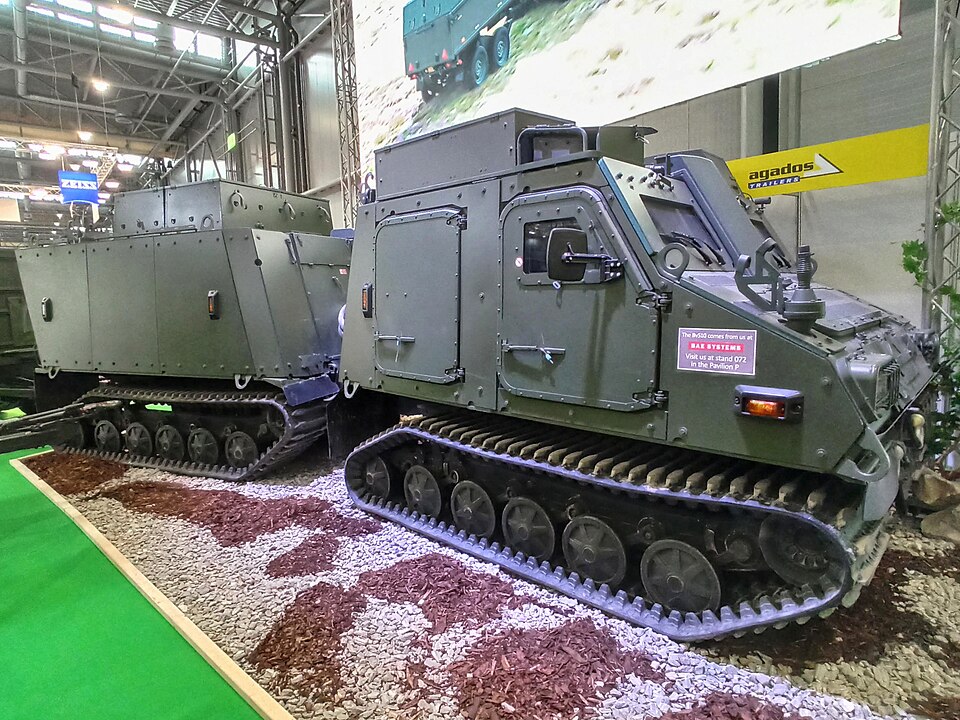
BvS10 at IDET 2023
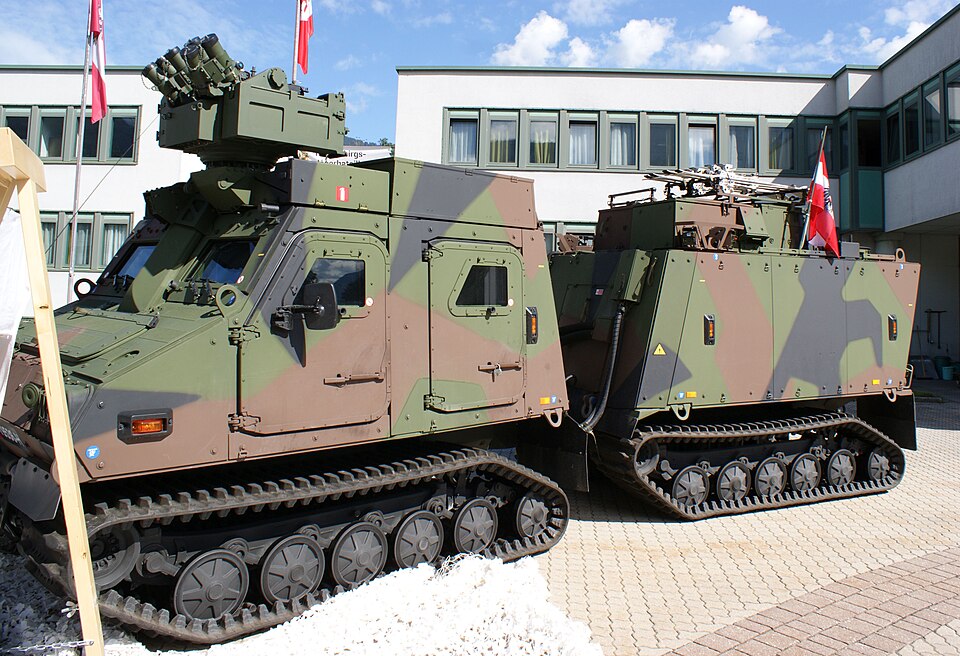
Austrian BvS10, 13ASD Bludesch Walgaukaserne.
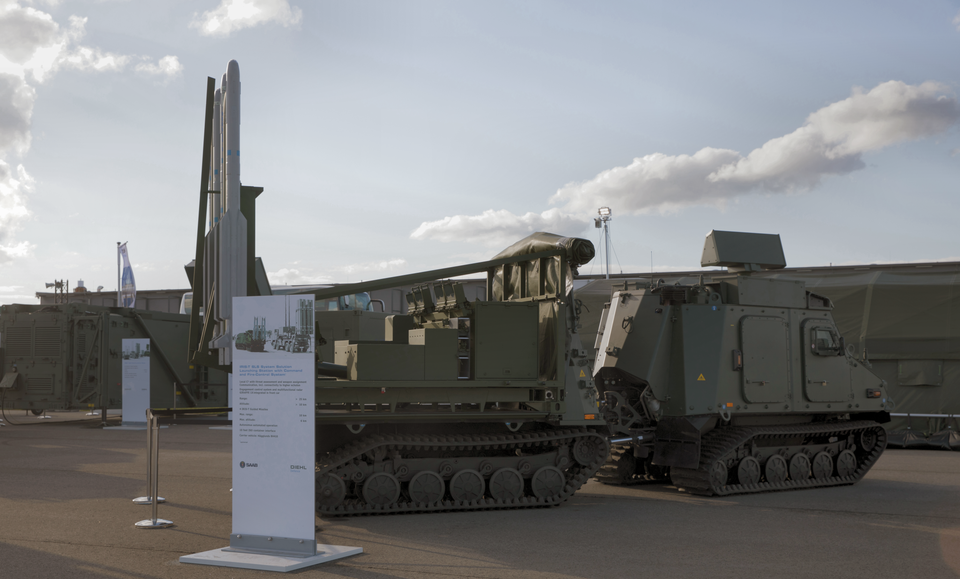
German Bv S10 98 IRIS-T SLS
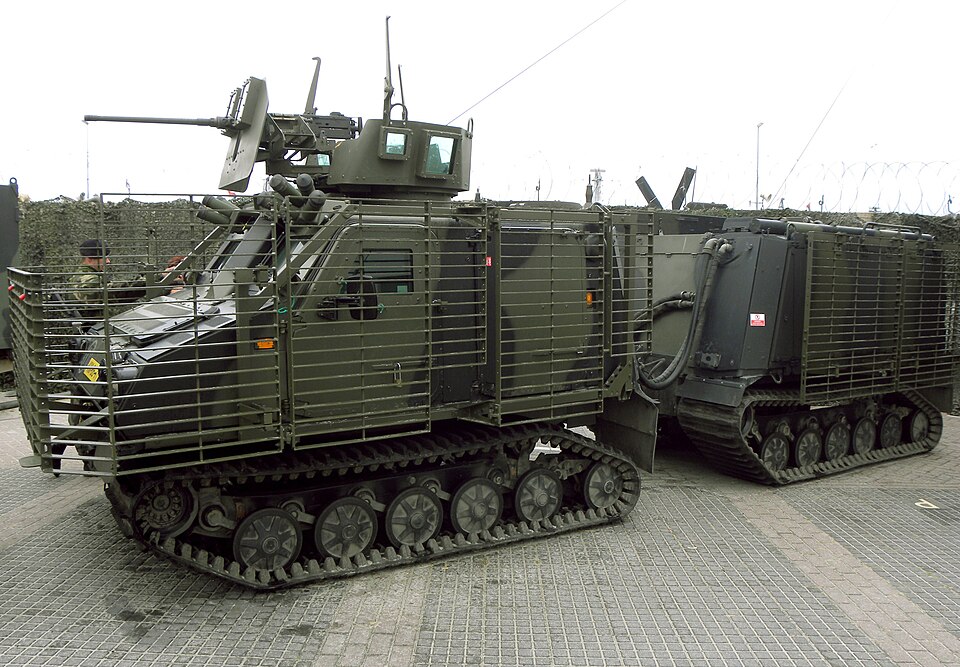
Dutch Hägglunds BvS 10 deployed in Afghanistan
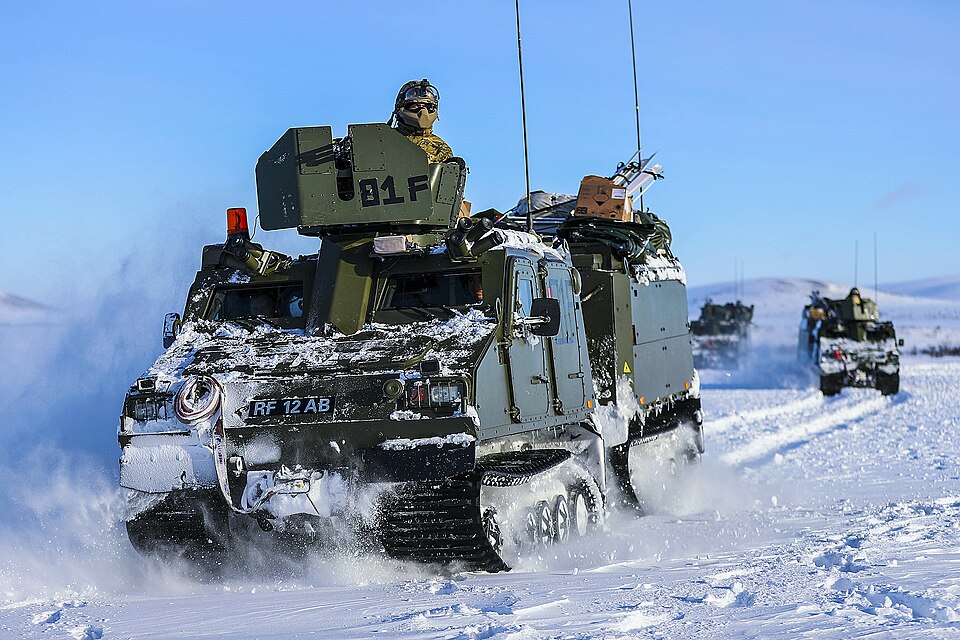
Swedish Bandvagn 410 in winter training
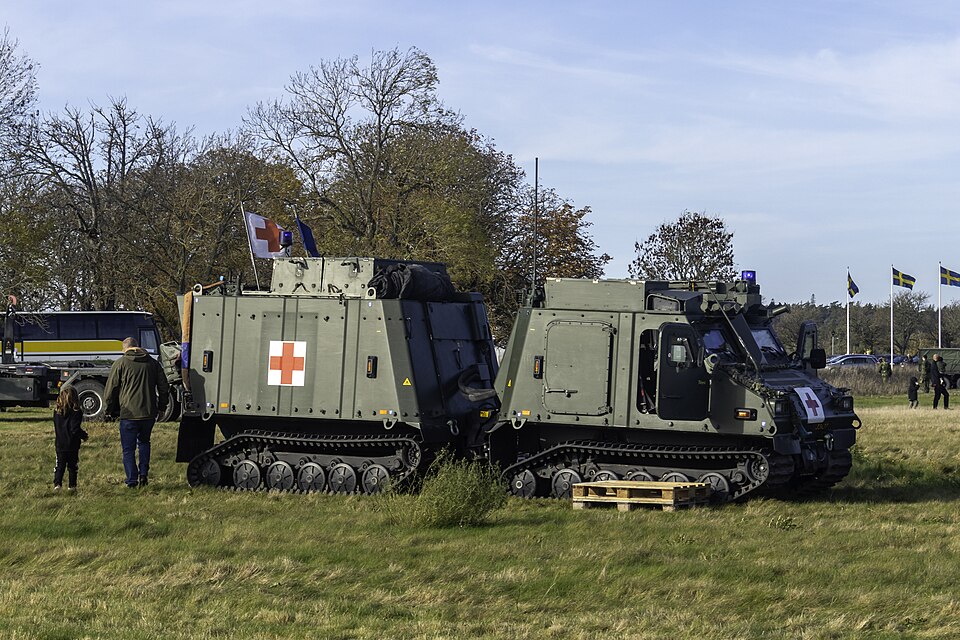
Swedish Bandvagn 410, Gotlands regemente 01
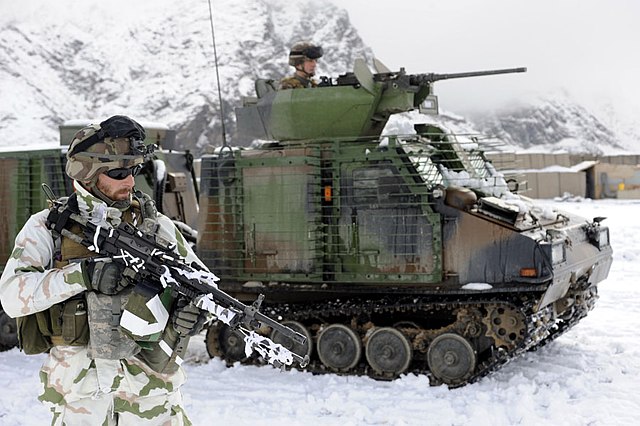
French mountain troop in Afghanistan, with the initial PL80 manned weapon station
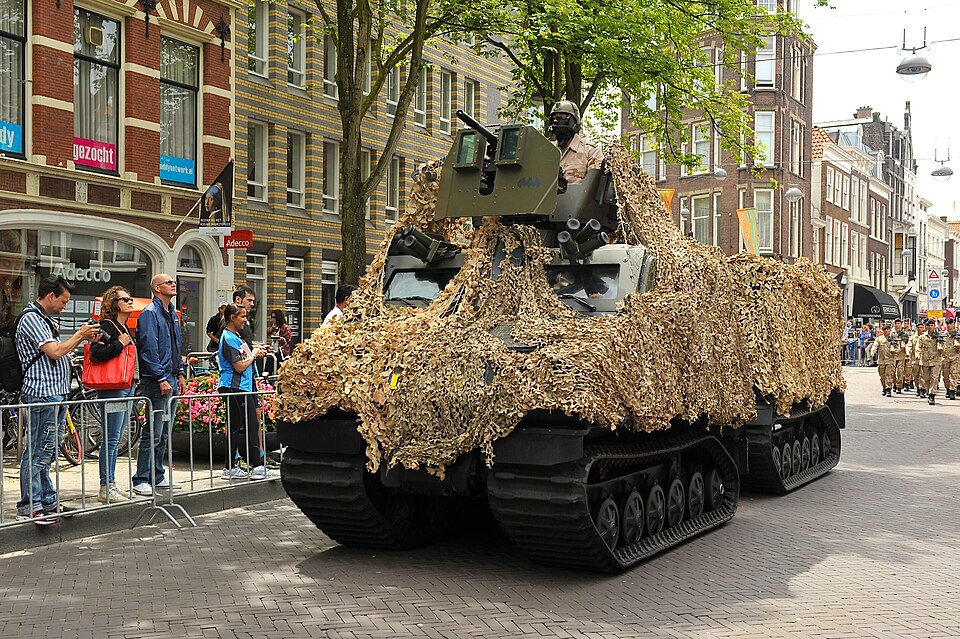
Dutch BvS10 camouflaged
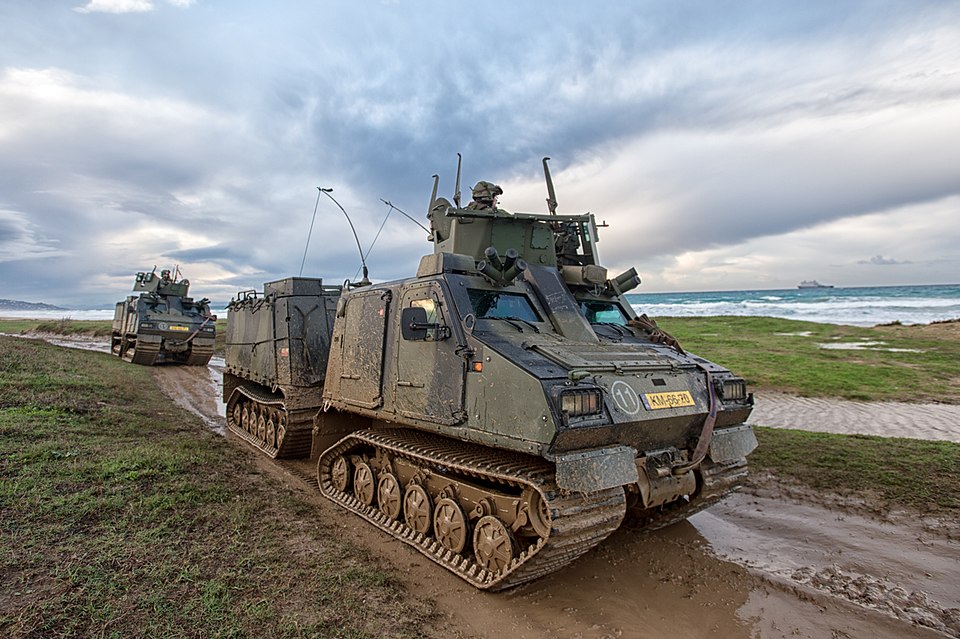
Dutch BvS10
Read More/Src
deagel.combaesystems.com
thedefensepost.com
armedconflicts.com
baesystems.com bvs10-beowulf
tanknutdave.com
militaryfactory.com
tankmuseum.org/
